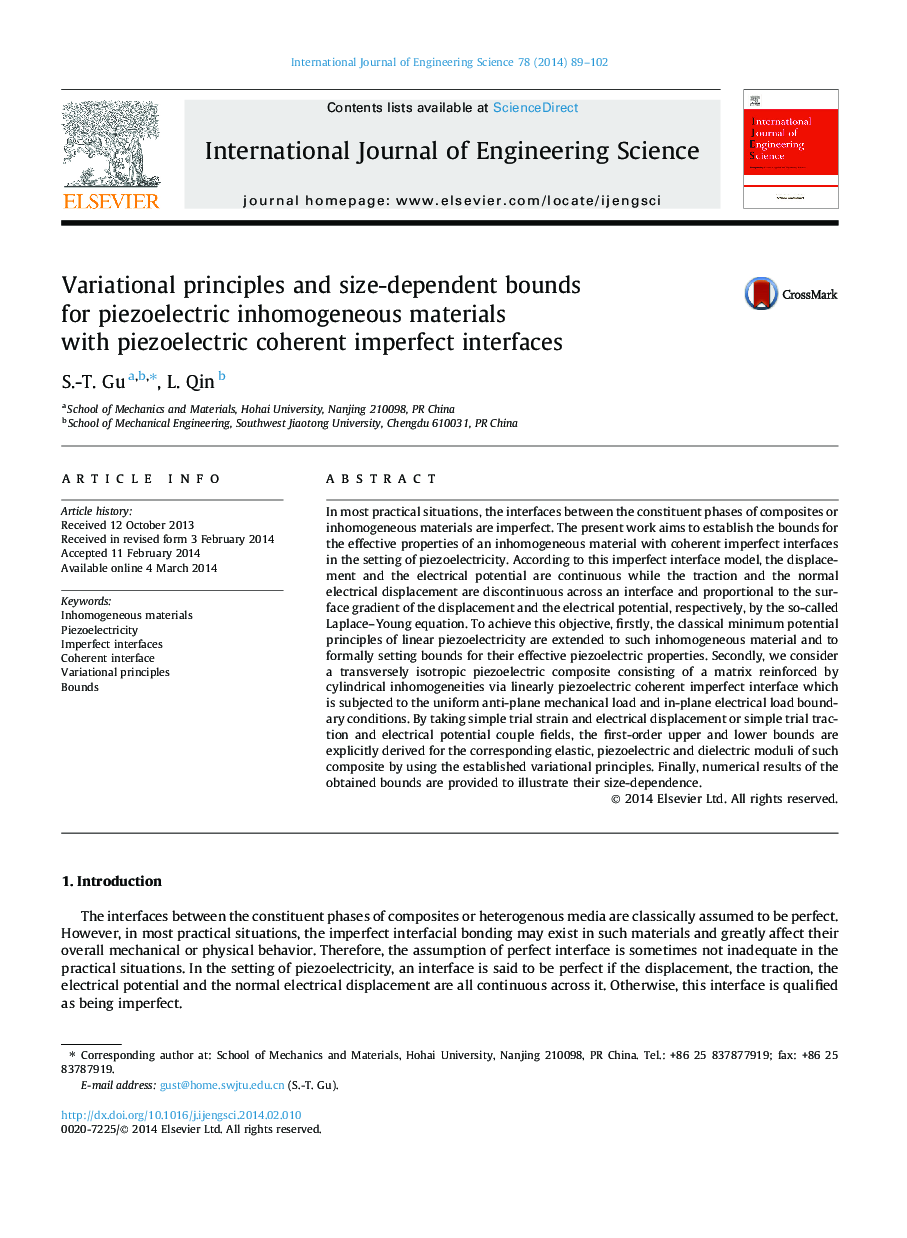| Article ID | Journal | Published Year | Pages | File Type |
|---|---|---|---|---|
| 824918 | International Journal of Engineering Science | 2014 | 14 Pages |
In most practical situations, the interfaces between the constituent phases of composites or inhomogeneous materials are imperfect. The present work aims to establish the bounds for the effective properties of an inhomogeneous material with coherent imperfect interfaces in the setting of piezoelectricity. According to this imperfect interface model, the displacement and the electrical potential are continuous while the traction and the normal electrical displacement are discontinuous across an interface and proportional to the surface gradient of the displacement and the electrical potential, respectively, by the so-called Laplace–Young equation. To achieve this objective, firstly, the classical minimum potential principles of linear piezoelectricity are extended to such inhomogeneous material and to formally setting bounds for their effective piezoelectric properties. Secondly, we consider a transversely isotropic piezoelectric composite consisting of a matrix reinforced by cylindrical inhomogeneities via linearly piezoelectric coherent imperfect interface which is subjected to the uniform anti-plane mechanical load and in-plane electrical load boundary conditions. By taking simple trial strain and electrical displacement or simple trial traction and electrical potential couple fields, the first-order upper and lower bounds are explicitly derived for the corresponding elastic, piezoelectric and dielectric moduli of such composite by using the established variational principles. Finally, numerical results of the obtained bounds are provided to illustrate their size-dependence.
